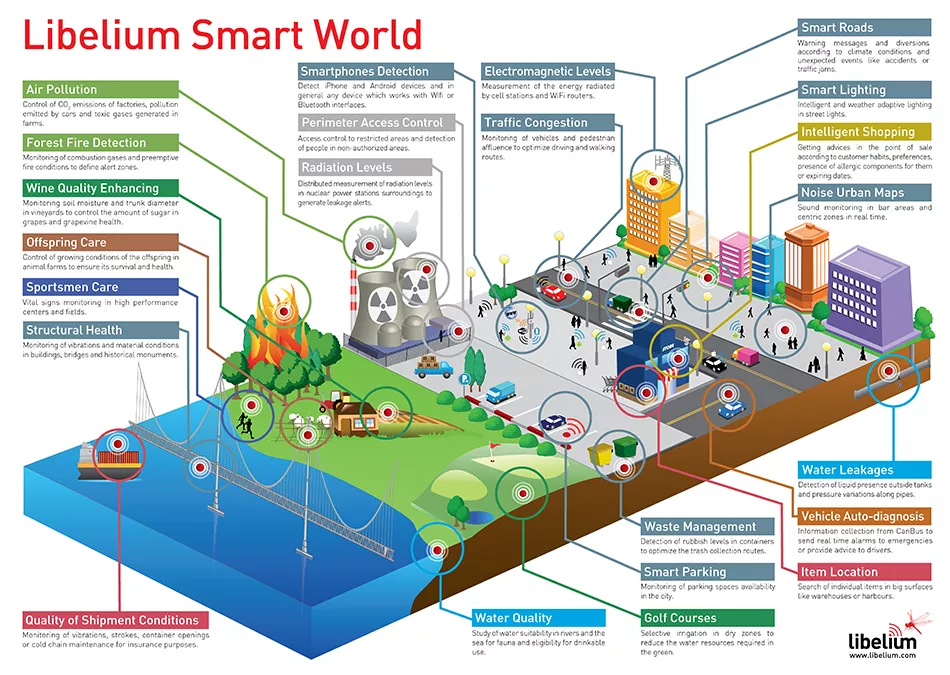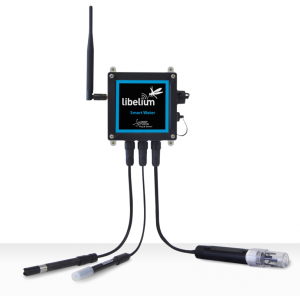Smart city IoT applications
The objective of smart city applications is to integrate information, communication and decision making seamlessly and in return to improve quality of life.
An extended IoT network enables city officials to monitor infrastructure and make decisions based on collected data. By installing a large number of sensors and IoT devices across the city, waste and inefficiency can be decreased dramatically.

Examples of typical smart city applications:
Air Pollution
– Control of CO2 emissions of factories, pollution emitted by cars and toxic gases generated in farms. One or more IoT devices are installed in an area collecting air quality readings which can be checked on a mobile app in real time.
– Bush Fire Detection:
Monitoring of combustion gases and preemptive fire conditions to define alert zones. One or more IoT devices are installed in an area collecting air quality readings which can be checked in a mobile app in real time.
Water applications
Water Quality
– Study of water suitability in rivers and the sea for fauna and eligibility for drinkable use. An IoT device is installed in an area and collecting water quality readings which can be checked in a mobile app in real time.
– Selective irrigation systems e.g. on golf courses. Irrigation in dry zones to reduce the water resources required in the green. An automated irrigation system where soil humidity sensors are feeding data into a central unit which actives certain irrigation zones only when needed.
– Water Leakages:
Detection of liquid presence outside tanks and pressure variations along pipes. Monitor flow and pressure along pipes.
Flow meters and pressure sensors are installed across pipelines. Inconsistency in data readings can pinpoint an error in the system automatically.

Libelium Waspmote with Smart Water additions
Miscellaneous smart city applications
– Noise monitoring
Sound monitoring in bar areas and centric zones in real time. Several IoT devices are installed across an area collecting noise readings. The data can be read in real time in a mobile app and also collected in a central database. The data can be used to create noise maps and other meaningful data.
Smart city IoT technologies are growing rapidly and there is a huge potential in this field in the upcoming years. If you have any questions about IoT or application development, please don’t hesitate to contact Team Brookvale.
Image source: www.libelium.com
